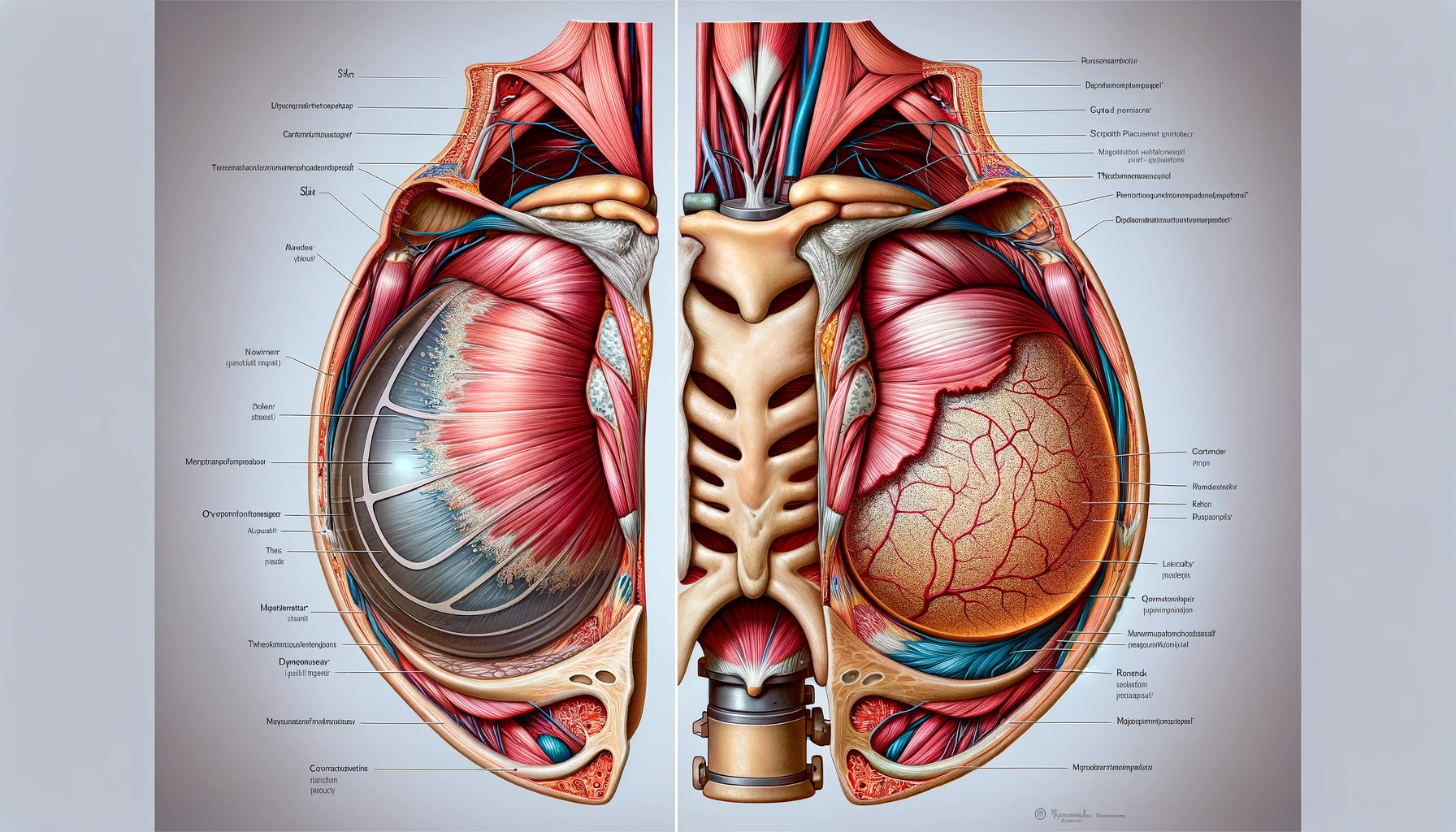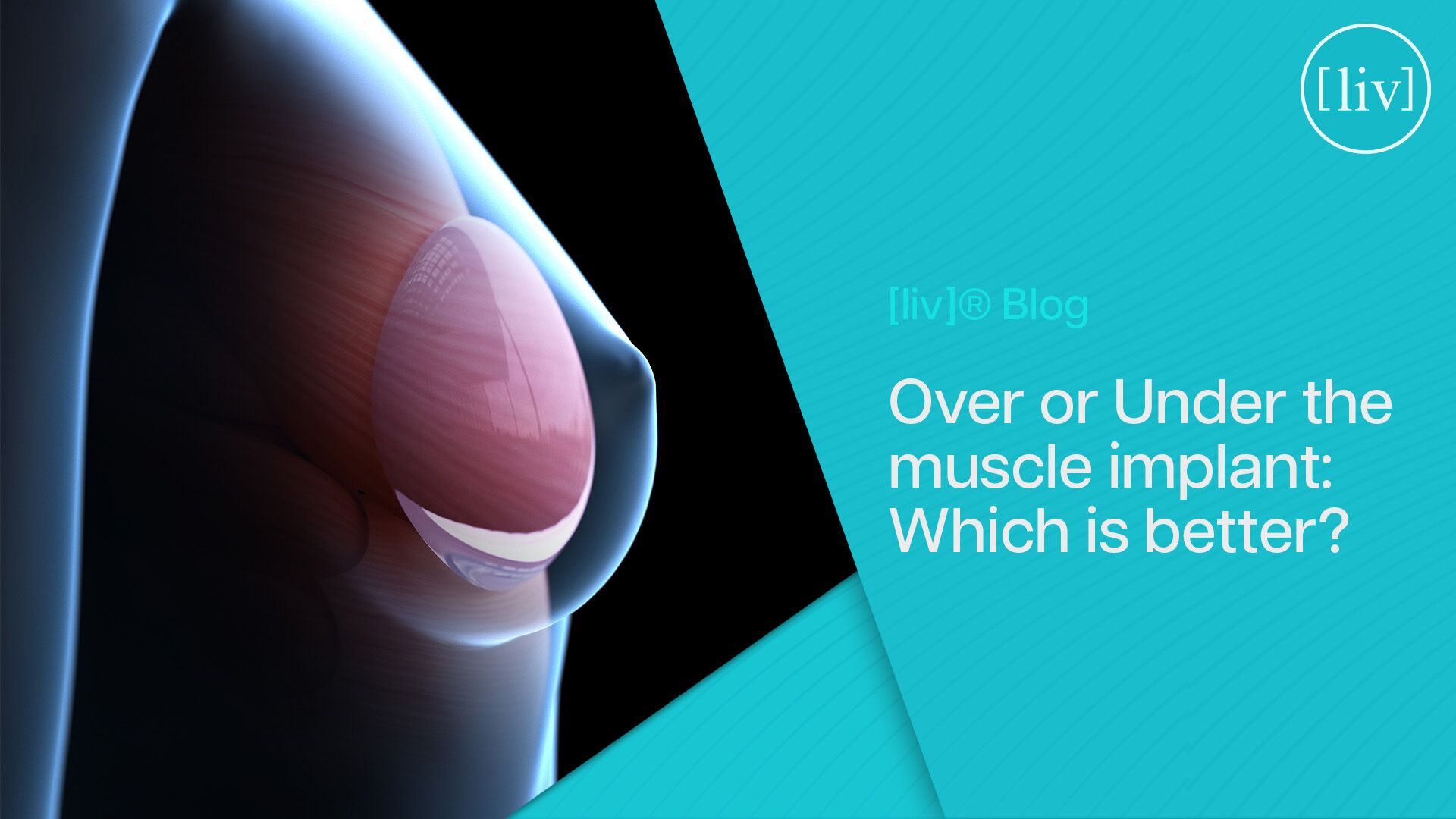Discover the variances between over and under the muscle breast implants. Explore the aesthetic outcomes, recovery periods, and potential risks associated with each placement option. Make an informed decision with expert insights from qualified plastic surgeons.
Introduction
The placement of breast implants over or under the muscle is a critical decision to be made when considering breast augmentation surgery. The placement methods all offer distinct advantages and considerations that can have a significant impact on the final aesthetic outcome and overall satisfaction with the procedure. When an individual wishes to achieve a desired breast appearance while minimizing potential risks and complications, understanding the differences between over- and under-muscle breast implants is essential. In this comprehensive guide, we will explore the nuances of each placement option, including their effects on recovery, aesthetic results, and long-term outcomes, enabling you to make an informed decision that aligns with your unique goals and preferences.
Understanding Breast Implants
Sure, let's dive into Understanding Breast Implants, providing a comprehensive look into this popular cosmetic procedure. This guide aims to cover the basics, types, considerations, and recovery to ensure you have a solid grasp of what breast implants entail.
Basics of Breast Implants
The purpose of breast implants is to increase breast size (augmentation) or rebuild breast tissue following a mastectomy or injury (reconstruction) by inserting medical devices under the breast tissue or chest muscle. Additionally, they can correct congenital defects and deformities of the chest wall, resulting in a more satisfying body image, as well as enhancing self-esteem and confidence.
Types of Breast Implants
Breast implants come in various sizes, shapes, and materials, each offering different benefits:
- Silicone Gel Implants: Filled with silicone gel, these implants feel more like natural breast tissue. If the implant leaks, the gel may remain within the implant shell or escape into the breast implant pocket. Regular monitoring with MRI or ultrasound is necessary to ensure their integrity.
- Saline Implants: These are filled with sterile salt water. They're inserted empty and then filled once they're in place, allowing for some adjustment in size. If a saline implant leaks, the body will absorb the saline and expel it naturally.
- Structured Saline Implants: A kind of saline implant that contains an inner structure to make the implant feel more natural.
- Cohesive Gel "Gummy Bear" Implants: Thicker than traditional silicone, these hold their shape even if the implant shell is breached but require a longer incision in surgery.
- Autologous Fat Transfer: A less common method that involves liposuction to take fat from other parts of your body and inject it into your breasts.
Considerations Before Getting Breast Implants
- Personal Goals: Reflect on your motivations and discuss them with a plastic surgeon to ensure breast implants will meet your expectations.
- Health and Lifestyle: Certain conditions or lifestyle factors might affect your suitability or the outcome of the surgery.
- Surgeon’s Expertise: Choose a board-certified plastic surgeon with extensive experience in breast augmentation.
- Risks and Complications: Be aware of potential risks such as implant rupture, capsular contracture, and the need for future surgeries.
- Maintenance and Monitoring: Understand the need for future check-ups, especially for silicone implants, to ensure their condition.
Recovery and Aftercare
Recovery varies by individual and type of implant. Initial soreness, swelling, and a period of rest are common, with gradual resumption of activities over weeks to months. Follow your surgeon’s advice on aftercare and when to return to daily activities.
The Decision Process
Deciding to get breast implants is significant and requires thorough research and consultation with medical professionals. Discuss all your options, expectations, and concerns with a plastic surgeon to make an informed decision that aligns with your health and wellness goals.
Difference between over and under the muscle breast implants
Over the muscle Breast
Understanding Over the Muscle Breast Implants involves delving into the specific placement method of breast augmentation, where the implant is situated between the breast tissue and the pectoral muscle. This method, also known as subglandular placement, offers distinct advantages and considerations compared to its counterpart, the under the muscle (or submuscular) placement.
Pros of Over the Muscle Placement
- Ease of Placement: The procedure is straightforward for most surgeons, offering a less complex surgical approach.
- Recovery: Patients might experience a shorter and less painful recovery period since the chest muscles aren't disturbed during surgery.
- Aesthetic Choices: This placement allows for the use of larger implants and can create more pronounced cleavage, especially beneficial for individuals with naturally wide-spaced breasts. It is also preferred by many athletes or those who engage in weightlifting, as it avoids the distortion of implant shape when pectoral muscles are flexed.
- Sagging Correction: For some, over the muscle implants can offer a slight lift to mildly sagging breasts, potentially postponing the need for a breast lift.
Cons of Over the Muscle Placement
- Visibility and Rippling: Especially in patients with minimal breast tissue, implants might be more palpable or visible, and the risk of rippling is higher.
- Mammography: Additional views may be necessary during mammograms, which could incur extra costs.
- Capsular Contracture: There's a higher risk of developing this condition, where scar tissue tightly forms around the implant, possibly leading to discomfort and aesthetic concerns.
- Bottoming Out: The risk of the implant moving lower on the chest wall, giving an unnatural appearance, is greater.
Considerations and Suitability
Choosing over the muscle implants is particularly recommended for those with sufficient natural breast tissue to camouflage the implant and for those seeking a quicker recovery with less discomfort. It might also be suitable for individuals prioritizing certain aesthetic outcomes, like pronounced cleavage or avoiding the impact of muscle movement on the implant shape. However, it's essential to weigh these benefits against the potential for increased visibility of the implant and the higher risk of capsular contracture.
When deciding on breast implant placement, a thorough discussion with a board-certified plastic surgeon is critical to understand the implications of each choice, considering one's body type, lifestyle, and aesthetic goals. It's about finding the right fit for your specific needs and ensuring you are comfortable with the long-term considerations of your choice.

Under the Muscle Breast
Pros:
- Natural Appearance: Implants under the muscle can offer a more natural breast contour as the muscle provides a smoother transition from the chest wall to the implant.
- Reduced Rippling and Visibility: The muscle layer helps to disguise the implant, reducing the risk of visible rippling, particularly beneficial for slender patients with minimal breast tissue.
- Lower Risk of Capsular Contracture: Placing implants under the muscle has been associated with a decreased risk of capsular contracture.
- Improved Mammography: Less interference with mammogram examinations, allowing easier detection of breast abnormalities.
Cons:
- Recovery Time: Typically involves a longer and more uncomfortable recovery period due to the disturbance of the chest muscle during surgery.
- Physical Activity Impact: Certain activities or exercises that engage the pectoral muscles might cause temporary distortion of the breast shape.
- Animation Deformity: Movement of the pectoral muscle can lead to an animation deformity, where the shape of the breast changes with muscle contraction.
Making the Decision
The choice between subglandular and submuscular implant placements hinges on several factors, including body type, lifestyle, aesthetic goals, and specific medical considerations. For instance, athletes or very active individuals might have different priorities compared to someone seeking a specific cosmetic outcome.
It's vital to have a detailed discussion with a board-certified plastic surgeon who can assess your unique situation and guide you towards the option that best meets your expectations and needs. The decision is highly personal and should be made based on a thorough understanding of the benefits and drawbacks of each approach.
Post-Surgery Expectations and Care
After undergoing breast augmentation surgery, it's essential to have a clear understanding of what to expect during the post-surgery period and how to properly care for your new breast implants. Let's explore the expectations and necessary care steps in detail:
Post-Surgery Expectations:
1. Immediate Recovery Period:
- Discomfort: You may experience some pain, swelling, and discomfort immediately after surgery. Your surgeon will prescribe pain medication to manage these symptoms.
- Restricted Activities: Expect to limit physical activities, including heavy lifting and strenuous exercise, for the first few weeks following surgery to allow for proper healing.
2. Longer-Term Recovery:
- Swelling Reduction: Swelling is normal after surgery and will gradually decrease over the weeks following the procedure.
- Scar Healing: Incision scars will initially appear red and raised but should fade and flatten over time. Proper scar care, such as using silicone gel or sheets, can aid in the healing process.
3. Results:
- Immediate Changes: While you'll notice an immediate increase in breast size and shape, it may take several months for the final results to fully manifest as swelling subsides and implants settle.
- Supportive Garments: Your surgeon may recommend wearing a supportive bra or compression garment to minimize swelling and support the breasts during the initial recovery phase.
Post-Surgery Care:
1. Follow Surgeon's Instructions:
- Medication: Take prescribed pain medication and antibiotics as directed by your surgeon to manage discomfort and prevent infection.
- Rest and Recovery: Allow your body to rest and avoid strenuous activities to promote optimal healing.
- Hygiene: Follow proper hygiene practices, including gentle cleansing of the incision sites, to prevent infection and promote wound healing.
2. Monitor for Complications:
- Infection: Watch for signs of infection, such as increased pain, redness, swelling, or discharge from the incision sites, and notify your surgeon if you experience any concerning symptoms.
- Capsular Contracture: Be aware of symptoms such as breast firmness, pain, or changes in breast shape, which could indicate capsular contracture, a potential complication where scar tissue tightens around the implant.
3. Attend Follow-Up Appointments:
- Scheduled Visits: Attend all scheduled follow-up appointments with your surgeon to monitor your recovery progress and address any concerns or complications promptly.
- Imaging Studies: Follow your surgeon's recommendations for mammograms and breast cancer screenings, as breast implants may require special imaging techniques.
4. Lifestyle Adjustments:
- Supportive Bras: Wear supportive bras that provide adequate support and minimize movement to help maintain the shape and position of your implants.
- Healthy Habits: Adopt a healthy lifestyle, including regular exercise and a balanced diet, to support overall well-being and ensure the longevity of your breast implants.
FAQ’s
Under the muscle implants are often preferred for individuals with minimal breast tissue, as the muscle provides additional coverage and support.
Yes, over the muscle implants may require additional imaging views during mammograms, while under the muscle implants typically allow for clearer imaging.
Under the muscle implants may offer more stable long-term results compared to over the muscle implants.
Yes, in some cases, revision surgery can be performed to change the implant placement, although it's important to discuss the risks and benefits with a qualified plastic surgeon.
Consulting with a board-certified plastic surgeon is crucial to determine the most suitable implant placement based on your individual anatomy, preferences, and aesthetic goals.
Conclusion
The difference between over and under the muscle breast implants lies in the placement technique and its impact on the aesthetic outcome, recovery process, and potential risks. Over the muscle implants offer a more pronounced look with a shorter recovery period but may carry a higher risk of complications.
In contrast, under the muscle implants provide a more natural contour and lower risk of complications, albeit with a longer recovery time. Ultimately, the choice between the two depends on individual preferences, body type, and desired outcomes, emphasizing the importance of consulting with a qualified plastic surgeon to determine the most suitable option.



